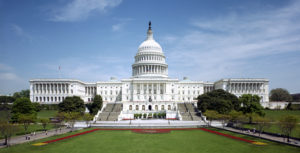Large tax equity announcements usually include US Bank, State Street, Goldman Sachs, or Bank of America and not a boutique advisory firm. These tax equity providers are syndicating pools of investments into the solar market. But it seems that things are changing with a new $150 million investment for a Sunrun fund by a new firm, Tax Equity Advisors (TEA). The biggest difference is that the capital is coming from an unnamed Fortune 500 corporation, making a direct investment into tax equity for solar. In other words, tax equity supply may have just gotten the early adopter, the unicorn that solar developers have been seeking for years.
SolarWakeup spoke to Jonathan Silver, the managing director for Tax Equity Advisors about the investment and what’s next for the firm. Silver told us that TEA has been working with Fortune 500 companies for over a year, an education process that meant going through many levels of understanding then approvals. Silver said, “We formed TEA to bring the opportunity of solar tax equity to corporate America. Corporations are interested in the returns solar represent but it needed to be easier for them to get the scale they need.” Corporations look at tax equity to offset their estimated liabilities, so sculpting the right investment size was a key part of the process.
The $150 million first investment is just the start. The Fortune 500 that TEA is managing the investment for is looking to deploy another $250 million, of which $150 million is already allocated. In response to why a single corporation was deploying $400 million, Silver said, “Seeing an opportunity to deploy significant tax advantaged capital at attractive returns without needing to build an investment management team was a key value proposition.” The boutique advisory group is managing the investment over the span of the partnership with the sponsor, handling the compliance for the years after the initial investment is made.
Last week’s announcement with Sunrun was for $150 million for the tax equity portion of the fund, meaning that Sunrun will be able to deploy at least a total of $300 million worth of solar projects. The projects are split between 2016 and 2017 placed in service and could continue a new trend away from the banks, that have long cornered the market for solar tax equity especially in the above $50 million bracket.
So what’s next for the firm? Silver told us that they are talking with other corporations with differing amounts of investment needs. Through managed accounts, TEA is matching the right investment with the right investor. With TEA in the market offering a new supply, solar can be hopeful that other corporations could be looking to deploy tax equity into a market that also offers positive publicity for their brand. In a tax code filled with opportunities to invest in the economy, growing the solar market is a worthy cause for corporations that meet the hurdles of the double bottom line.
By Yann Brandt, December 11th, 2016


